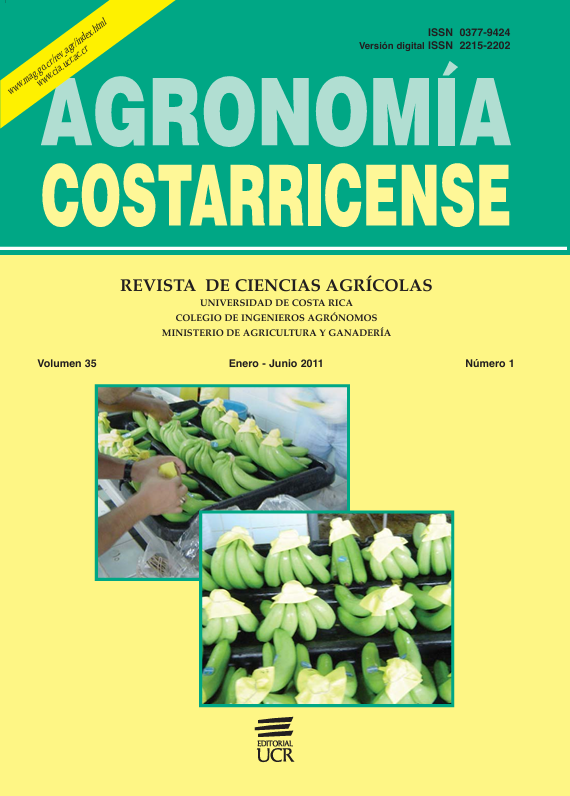Abstract
A study was conducted to determine the postharvest behavior during root storage of 12 commercial carrot hybrids: Bangor F1, Nandrin F1, Napoli F1 and Norwich F1 (from Bejo), Big Sur and Sirkana (from Nunhems), Bolero F1, Concerto F1 (VAC-03 F1) (from Vilmorin); XCR3688 and S-505 (from Sakata), Esperanza and Dulce (from Seminis), all grown in Cot, Oreamuno, Cartago. A standard post-harvest treatment was applied to all roots, which consisted of washing mechanically by brushing with water and citrus seed extract (Kilol L DF-100), selecting the commercial roots and passing them through an hydro cooler at 2°C for 15 min, then packing the roots in commercial plastic bags, and finally taking them to the postharvest, laboratory, where they were stored in a cold room at 2°C for 8 weeks (56 days). Two groups of roots belonging to each hybrid were established; in the first group the following external variables were assessed weekly on different roots: external color, firmness, xylem/phloem ratio and total soluble solids (ºbrix). In the second group the following external variables were also evaluated weekly: external color, weight loss (change in root mass) and incidence of postharvest deterioration factors, but on the same roots every week. Three types of root damage were found: physiological damage, pathogens and unknown causal agent. There was no difference among hybrids for weight loss; only Big Sur showed a different external color with respect to the other hybrids; XCR3688 and Bolero F1 showed greater firmness, and Bolero F1 had the highest brix value. Hybrids with the best postharvest behavior were Dulce, S-505, XCR3688 and Big Sur.
##plugins.facebook.comentarios##

This work is licensed under a Creative Commons Attribution-NonCommercial-NoDerivatives 4.0 International License.
Copyright (c) 2016 Agronomía Costarricense


